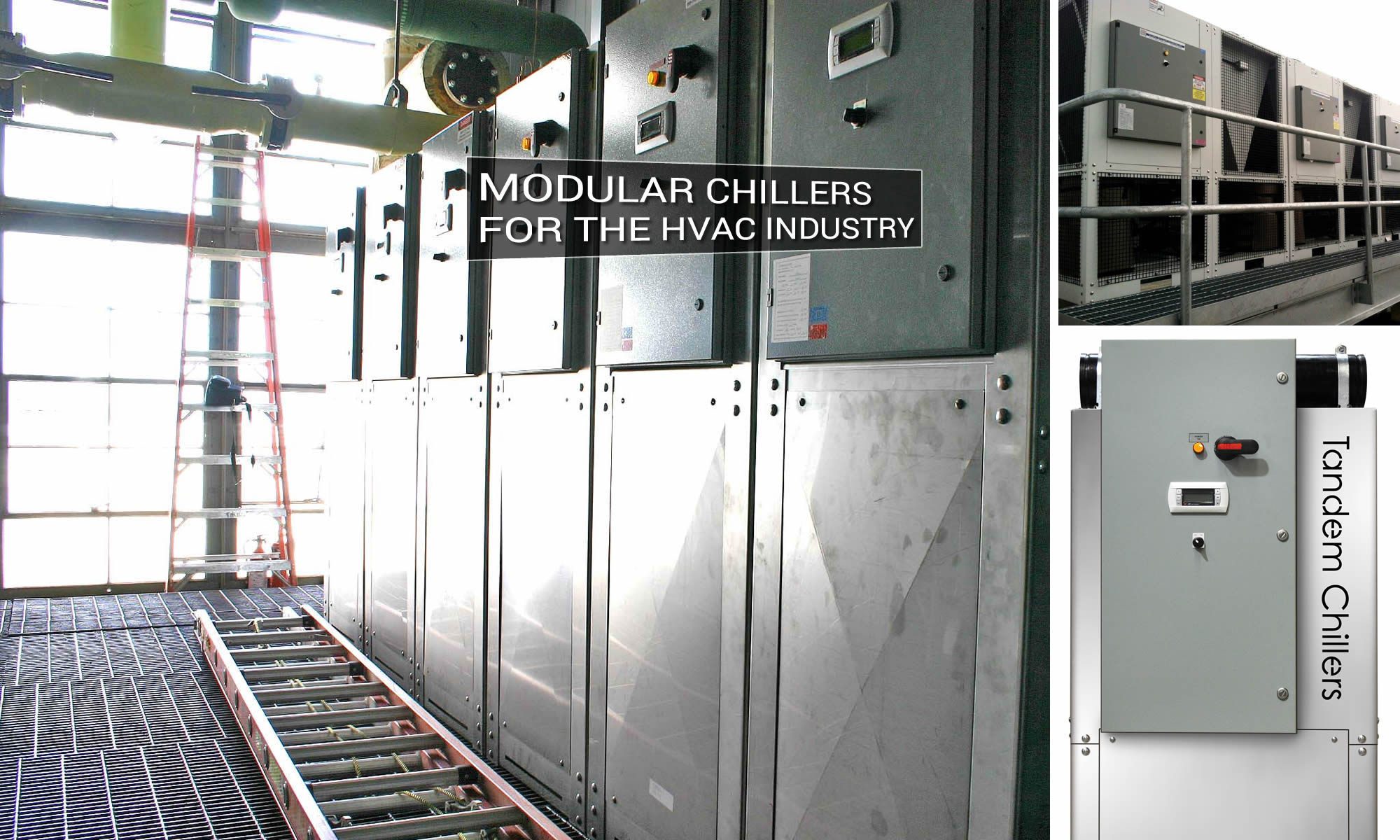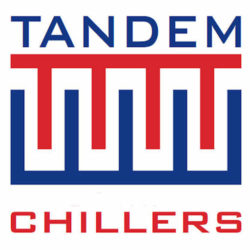Tandem Chillers Inc. manufactures water to water heat pumps and water and air source heat pumps. Since designing our first modular chiller over ten years ago, we’ve brought our vast knowledge gained over 40 years of process chiller design to the design of our heat pumps for alternative sources of cooling.
Our heat pumps are of sound refrigeration design and easily serviced. Best of all, our heat pumps are designed in such a way that they can be removed for service without shutting down the rest of the system. Today we have the widest selection of heat pump chillers, high efficiency chillers using a variety of Freons and it is expanding each year.
What Are Heat Pumps?
Heat pumps are very much like a typical chiller with the addition of a four-way reversing valve in the refrigeration circuit. In the summer months the chiller operates as a standard water cooled or air cooled chiller providing chilled water for the building. During the winter months the water to water chillers operation is reversed and the condenser becomes the evaporator cooling the tower water or fluid cooler water/glycol while the evaporator now acting as the condenser is providing hot water for the building heating.
During the winter months the air cooled chillers operation is reversed and the condenser becomes the evaporator cooling the outside air while the evaporator now acting as a condenser is providing hot water for the building heating.
These type of heat pump chillers use a “three pipe system”, with one set of water pipes for the summer condenser water/winter evaporator cooling supply water, on set of water pipes for the summer cooling water and the third set of pipes for the winter heating water. With three sets of water pipes there is no need for motorized valves to change over water lines from cooling to heat.
Water source heat pumps operate the same way as the water to water except that the summer condenser water/winter evaporator water are supplied from pipes in the ground and depending on the temperature of the ground source loop either water or water glycol is circulated and is known as “the source water” while the summer evaporator chilled water and the winter hot water is known as the “load water”
Three Kinds of Heat Pumps
There are three types of heat pumps: those that draw heat from the 1) air, 2) water, and 3) the ground.
1. Water Source Heat Pumps
Water source heat pumps draw heat from the building cooling tower or building fluid cooler usually operating with a water/glycol solution to prevent the water from freezing during the winter months. Learn more about water source heat pumps. Learn more about water source heat pumps. See Water Source
2. Ground Source Heat Pumps
Ground source heat pumps, which are also confusingly referred to as geothermal heat pumps, typically have higher efficiencies than air source heat pumps. This is because they draw heat from the ground or groundwater which is at a relatively constant temperature all year round below a depth of about eight feet or 2.5 meters. This means that the temperature differential is lower, leading to higher efficiency. The trade off for this improved performance is that ground source heat pump are more expensive to install due to the need for the digging of wells or trenches in which to place the pipes that carry the heat exchange fluid. When compared groundwater heat pumps are generally more efficient than heat pumps using heat from the soil. Learn more about ground source heat pumps. See Ground Source
3. Air Source Heat Pumps
Air source heat pumps transfers heat from the surrounding air to the refrigerant. If it is being used to heat a building, the refrigerant in the outside coils extracts heat from the air and evaporates into a gas. See Air Source

